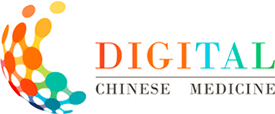Abstract:
Objective To map the research hotspots, developmental trends, and existing challenges in the integration of artificial intelligence (AI) with multi-omics in traditional Chinese medicine (TCM) through comprehensive bibliometric analysis.
Methods China National Knowledge Infrastructure (CNKI), Wanfang Data, China Science and Technology Journal Database (VIP), Chaoxing Journal Database, PubMed, and Web of Science were searched to collect literature on the theme of AI in TCM multi-omics research from the inception of each database to December 31, 2024. Eligible records were required to simultaneously address AI, TCM, and multi-omics. Quantitative and visual analyses of publication growth, core authorship networks, institutional collaboration patterns, and keyword co-occurrence were performed using Microsoft Excel 2021, NoteExpress v4.0.0, and Cite Space 6.3.R1. AI application modes in TCM multi-omics research were also categorized and summarized.
Results A total of 1 106 articles were enrolled (932 Chinese and 174 English). Publication output has increased continuously since 2010 and accelerated after 2016. Region-specific collaboration clusters were identified, dominated by Beijing University of Chinese Medicine, China Academy of Chinese Medical Sciences, Shanghai University of Traditional Chinese Medicine, and Nanjing University of Chinese Medicine. Keyword co-occurrence analysis revealed that current AI applications predominantly centered on metabolomics and algorithms such as cluster analysis and data mining. Research foci mainly ranked as follows: single herbs, herbal formulae, and disease-syndrome differentiation.
Conclusion Machine learning methods are the predominant integrative modality of AI in the realm of TCM multi-omics research at present, utilized for processing omics data and uncovering latent patterns therein. The domain of TCM, in addition to investigating omics information procured through high-throughput technologies, also integrates data on traditional Chinese medicinal substances and clinical phenotypes, progressing towards joint analysis of multi-omics, high-dimensionality of data, and multi-modality of information. Deep learning approaches represent an emerging trend in the field.









 下载:
下载: